Opticks Experience of GPU Optical Photon Simulation with NVIDIA OptiX
Opticks GPU Optical Simulation with NVIDIA® OptiX™ - Development Experience : Problems and Successes
Open source, https://bitbucket.org/simoncblyth/opticks
Simon C Blyth, IHEP, CAS — HSF Simulation Working Group Meeting, 27 May 2020
Outline
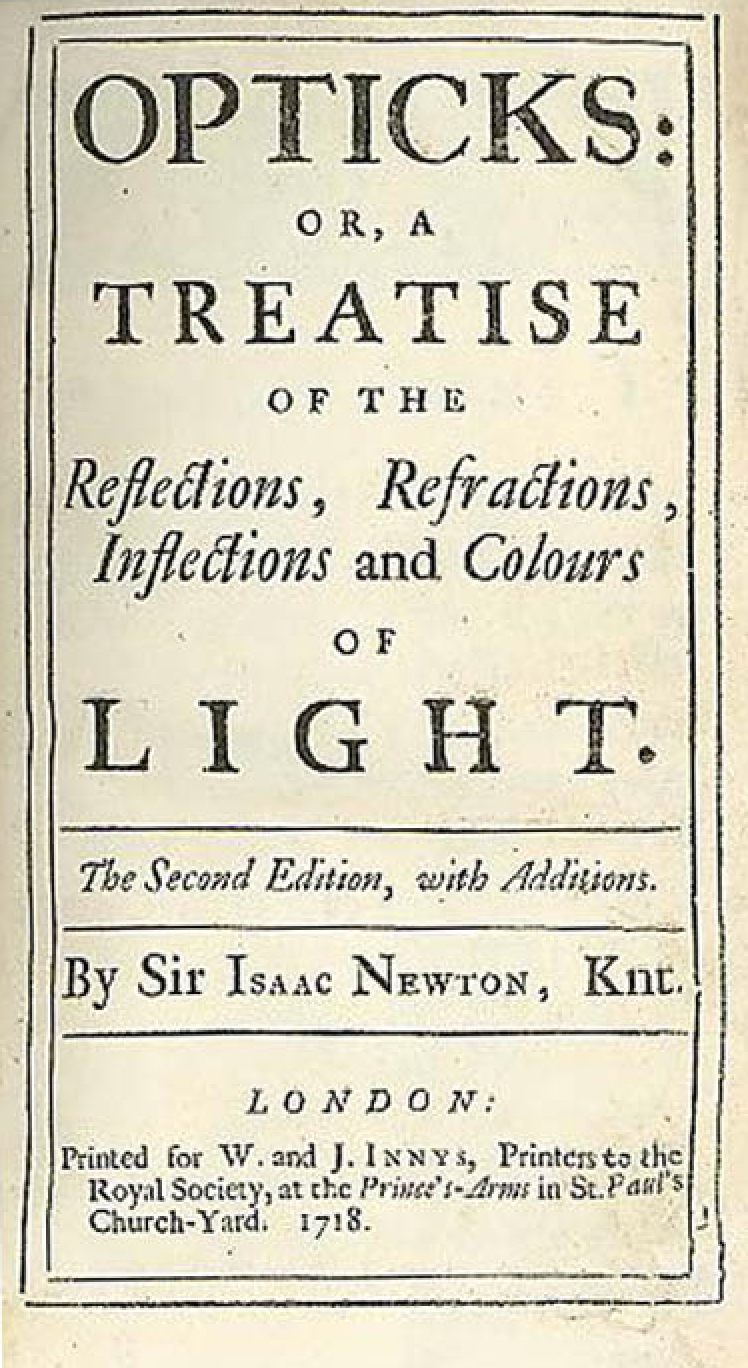
- JUNO Optical Photon Simulation Problem...
- GPU architecture and Ray tracing
- CPU vs GPU architectures, Latency vs Throughput
- Understanding GPU Graphical Origins -> Effective GPU Computation
- Optical Photon Simulation ≈ Ray Traced Image Rendering
- Rasterization and Ray tracing
- Turing Built for RTX, BVH : Bounding Volume Hierarchy
- NVIDIA OptiX Ray Tracing Engine
- Opticks : Translate Geant4 Context to GPU
- Geant4 + Opticks Hybrid Workflow : External Optical Photon Simulation
- Opticks : Translates G4 Optical Physics to CUDA/OptiX
- G4Solid -> CUDA Intersect Functions for ~10 Primitives
- G4Boolean -> CUDA/OptiX Intersection Program Implementing CSG
- Opticks : Translates G4 Geometry to GPU, Without Approximation
- Validation and Performance
- Validation of Opticks Simulation by Comparison with Geant4
- Perfomance Scanning from 1M to 400M Photons
- Opticks Experience : Problems and Successes
- Main Operational Problem : Manpower
- Main Technical Problem : Geometry Translation
- Further Problems with using NVIDIA OptiX
- Benefits from using NVIDIA OptiX
- Overview + Links
JUNO Optical Photon Simulation Problem...
Huge CPU Memory+Time Expense
- JUNO Muon Simulation Bottleneck
- ~99% CPU time, memory constraints
- Ray-Geometry intersection Dominates
- simulation is not alone in this problem...
- Optical photons : naturally parallel, simple :
- produced by Cherenkov+Scintillation
- yield only Photomultiplier hits
CPU vs GPU architectures, Latency vs Throughput
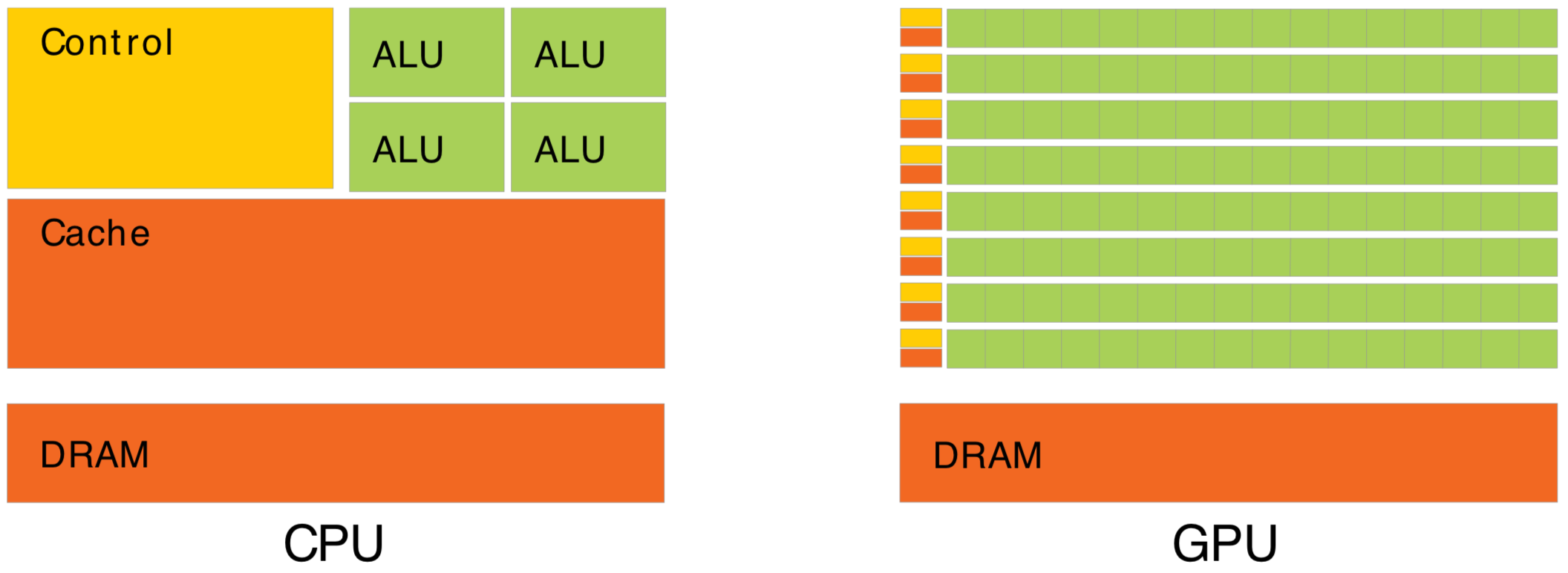
Waiting for memory read/write, is major source of latency...
- CPU : latency-oriented : Minimize time to complete single task : avoid latency with caching
- complex : caching system, branch prediction, speculative execution, ...
- GPU : throughput-oriented : Maximize total work per unit time : hide latency with parallelism
- many simple processing cores, hardware multithreading, SIMD (single instruction multiple data)
- simpler : lots of compute (ALU), at expense of cache+control
- design assumes abundant parallelism
Effective use of Totally different processor architecture -> Total reorganization of data and computation
Understanding Throughput-oriented Architectures https://cacm.acm.org/magazines/2010/11/100622-understanding-throughput-oriented-architectures/fulltext
Understanding GPU Graphical Origins -> Effective GPU Computation
OpenGL Rasterization Pipeline
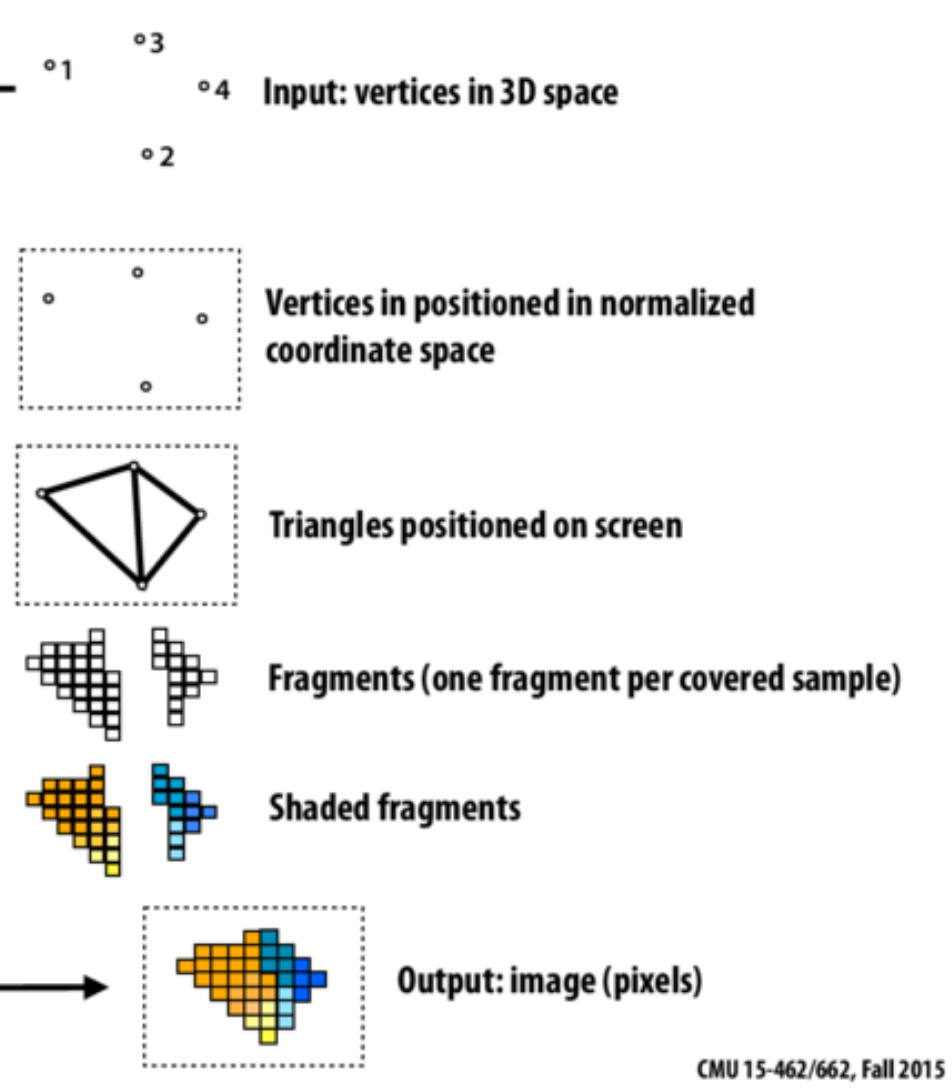
GPUs evolved to rasterize 3D graphics at 30/60 fps
- 30/60 "launches" per second, each handling millions of items
- literally billions of small "shader" programs run per second
Simple Array Data Structures (N-million,4)
- millions of vertices, millions of triangles
- vertex: (x y z w)
- colors: (r g b a)
Constant "Uniform" 4x4 matrices : scaling+rotation+translation
- 4-component homogeneous coordinates -> easy projection
Graphical Experience Informs Fast Computation on GPUs
- array shapes similar to graphics ones are faster
- "float4" 4*float(32bit) = 128 bit memory reads are favored
- Opticks photons use "float4x4" just like 4x4 matrices
- GPU Launch frequency < ~30/60 per second
- avoid copy+launch overheads becoming significant
- ideally : handle millions of items in each launch
Optical Photon Simulation ≈ Ray Traced Image Rendering
Not a Photo, a Calculation
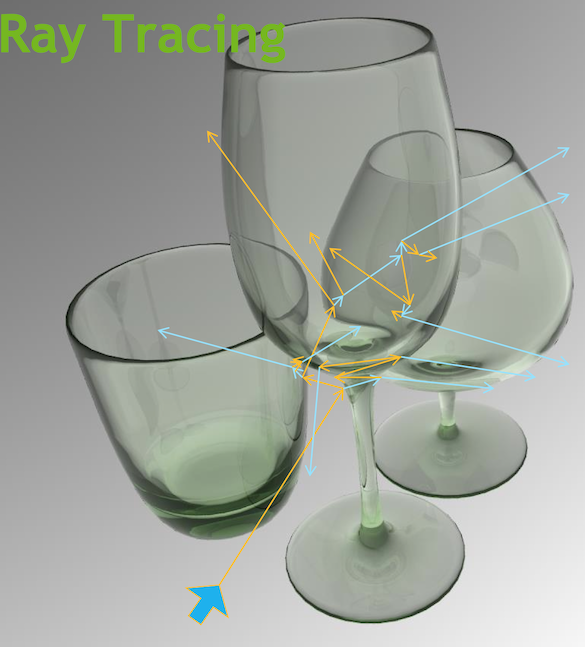
Much in common : geometry, light sources, optical physics
- simulation : photon parameters at PMT detectors
- rendering : pixel values at image plane
- both limited by ray geometry intersection, aka ray tracing
Many Applications of ray tracing :
- advertising, design, architecture, films, games,...
- -> huge efforts to improve hw+sw over 30 yrs
Ray-tracing vs Rasterization
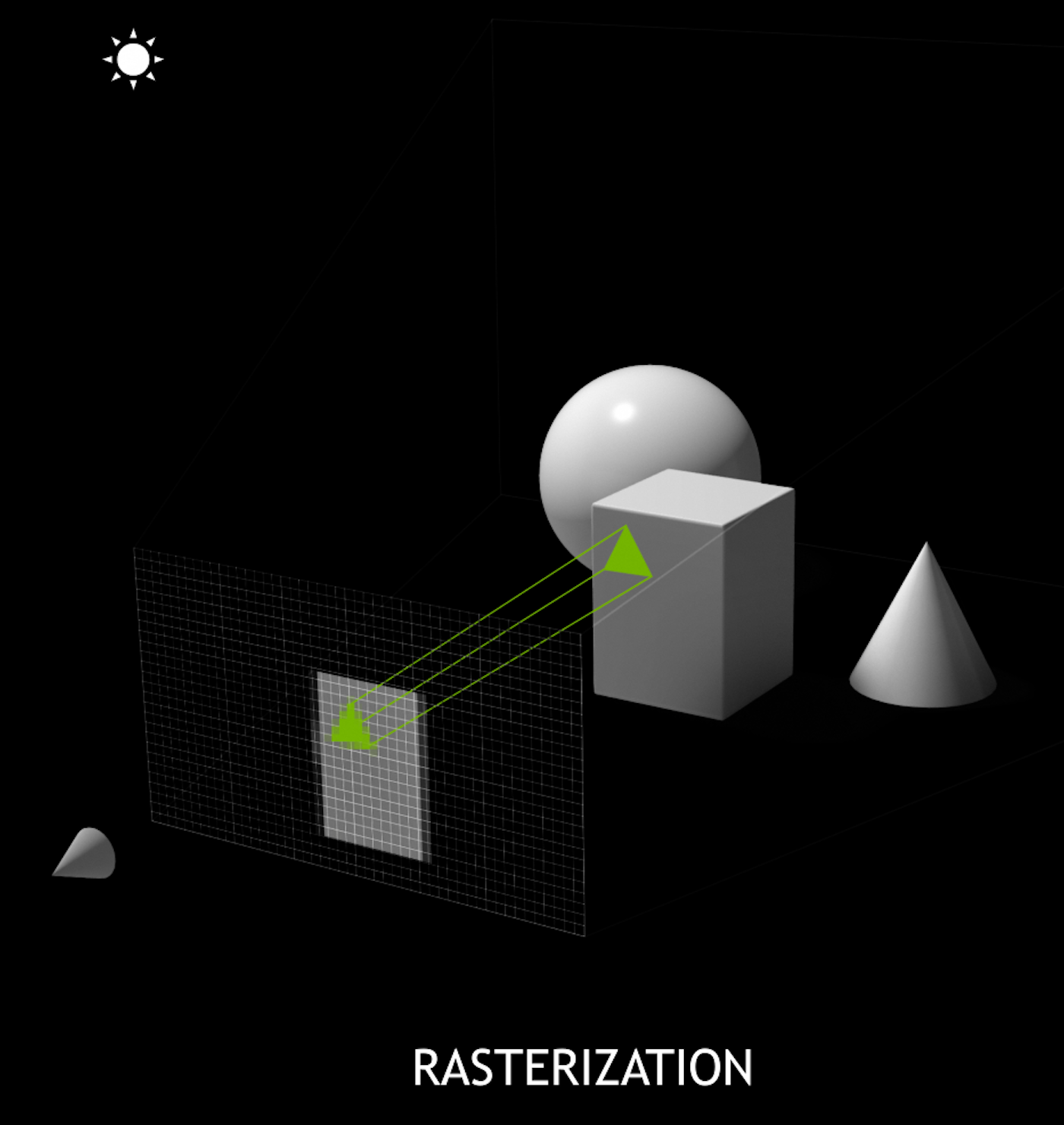
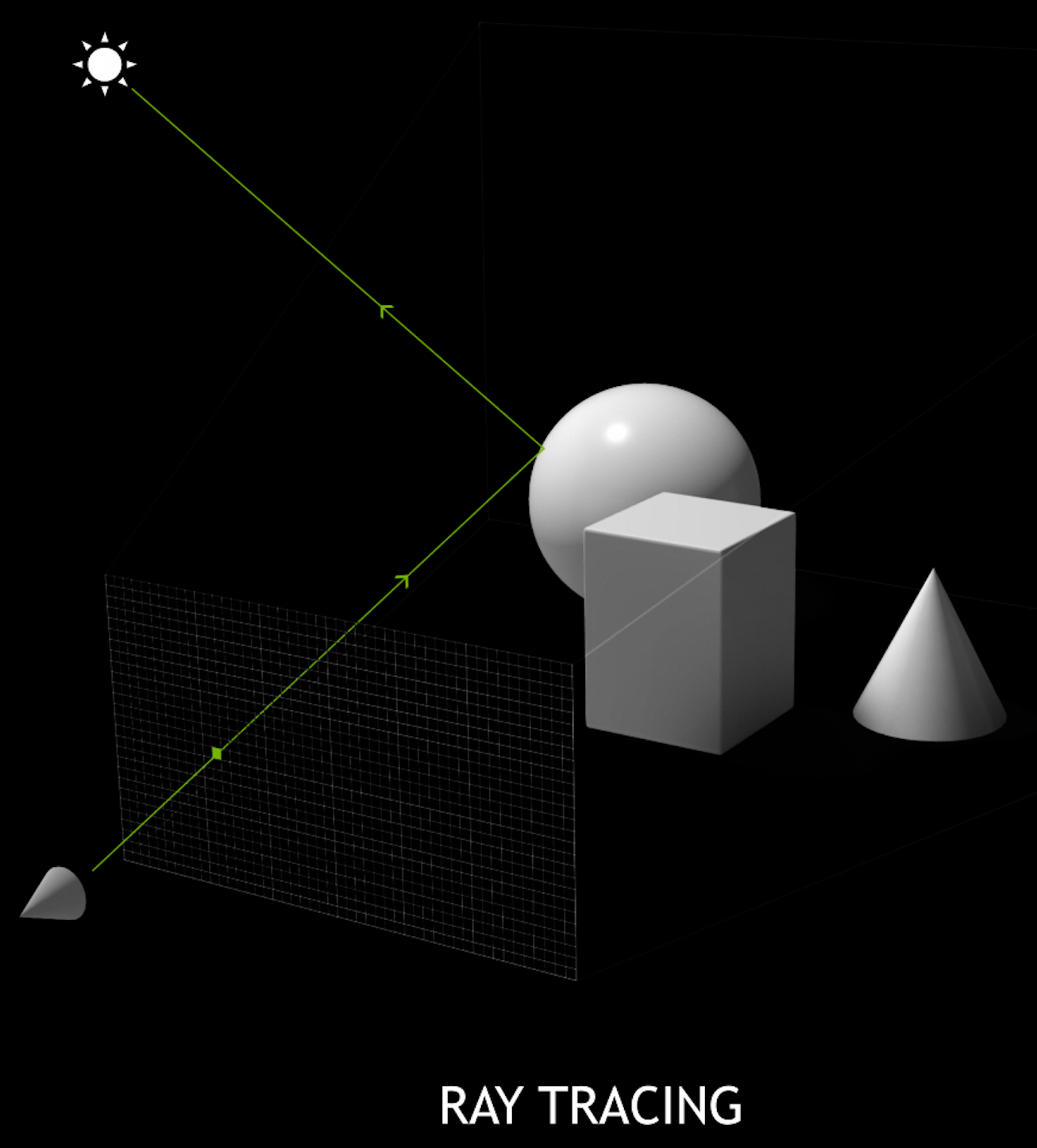
TURING BUILT FOR RTX 2
Offload Ray Trace to Dedicated HW
- RT core : BVH traversal + ray tri. intersection
- frees up general purpose SM
SM : Streaming Multiprocessor
BVH : Bounding Volume Hierarchy
Spatial Index Acceleration Structure
Tree of Bounding Boxes (bbox)
- aims to minimize bbox+primitive intersects
- accelerates ray-geometry intersection
NVIDIA® OptiX™ Ray Tracing Engine -- http://developer.nvidia.com/optix
OptiX Raytracing Pipeline
Analogous to OpenGL rasterization pipeline:
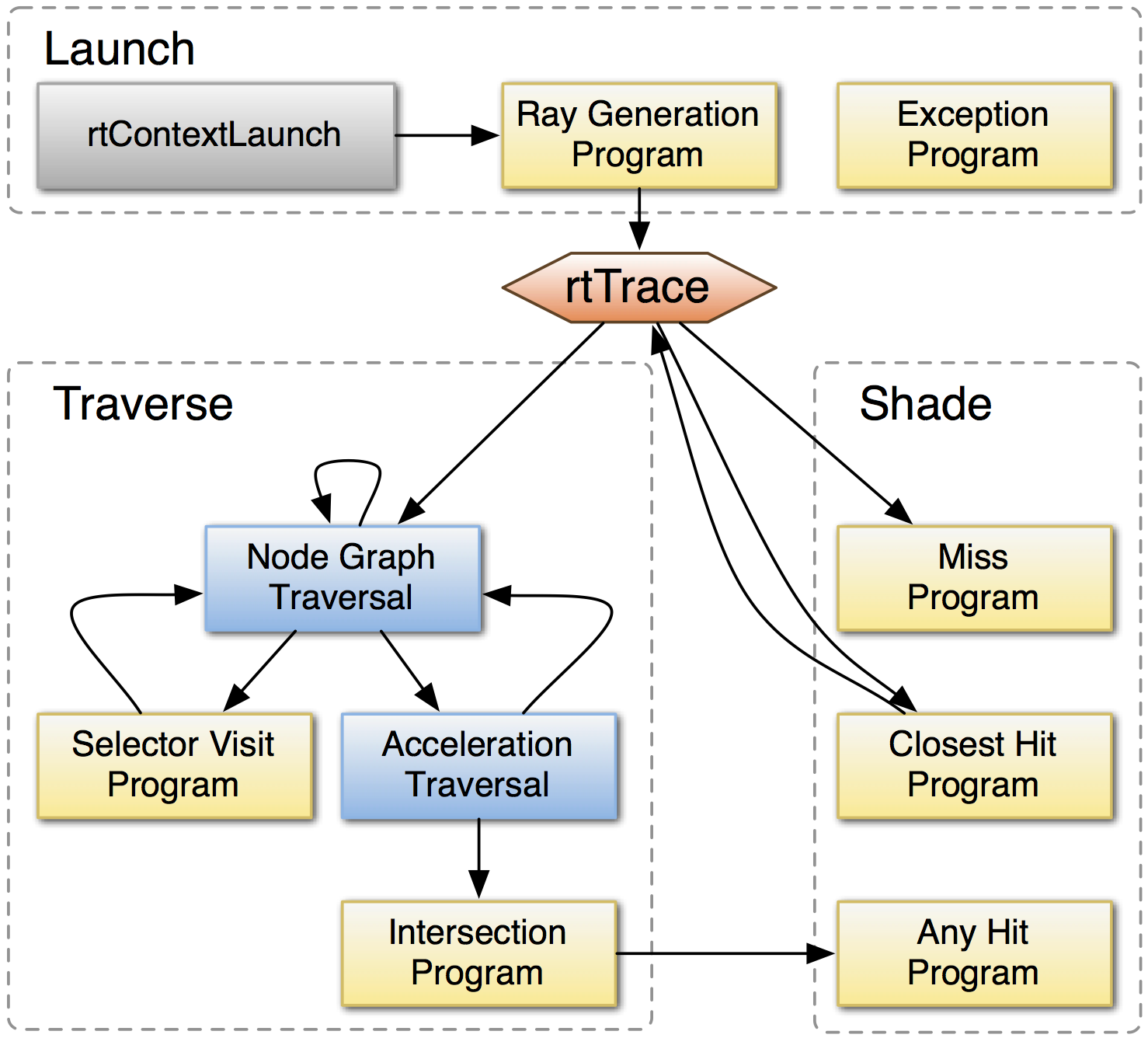
OptiX makes GPU ray tracing accessible
- accelerates ray-geometry intersections
- simple : single-ray programming model
- "...free to use within any application..."
- access RT Cores[1] with OptiX 6.0.0+ via RTX™ mode
NVIDIA expertise:
- compiler optimized for GPU ray tracing
- ~linear scaling up to 4 GPUs
- acceleration structure creation + traversal (Blue)
- instanced sharing of geometry + acceleration structures
Opticks provides (Yellow):
- ray generation program
- ray geometry intersection+bbox programs
[1] Turing RTX GPUs
Geant4OpticksWorkflow
Opticks : Translates G4 Optical Physics to CUDA/OptiX
GPU Resident Photons
- Seeded on GPU
- associate photons -> gensteps (via seed buffer)
- Generated on GPU, using genstep param:
- number of photons to generate
- start/end position of step
- Propagated on GPU
- Only photons hitting PMTs copied to CPU
Thrust: high level C++ access to CUDA

OptiX : single-ray programming model -> line-by-line translation
- CUDA Ports of Geant4 classes
- G4Cerenkov (only generation loop)
- G4Scintillation (only generation loop)
- G4OpAbsorption
- G4OpRayleigh
- G4OpBoundaryProcess (only a few surface types)
- Modify Cherenkov + Scintillation Processes
- collect genstep, copy to GPU for generation
- avoids copying millions of photons to GPU
- Scintillator Reemission
- fraction of bulk absorbed "reborn" within same thread
- wavelength generated by reemission texture lookup
- Opticks (OptiX/Thrust GPU interoperation)
- OptiX : upload gensteps
- Thrust : seeding, distribute genstep indices to photons
- OptiX : launch photon generation and propagation
- Thrust : pullback photons that hit PMTs
- Thrust : index photon step sequences (optional)
G4Solid -> CUDA Intersect Functions for ~10 Primitives
- 3D parametric ray : ray(x,y,z;t) = rayOrigin + t * rayDirection
- implicit equation of primitive : f(x,y,z) = 0
- -> polynomial in t , roots: t > t_min -> intersection positions + surface normals
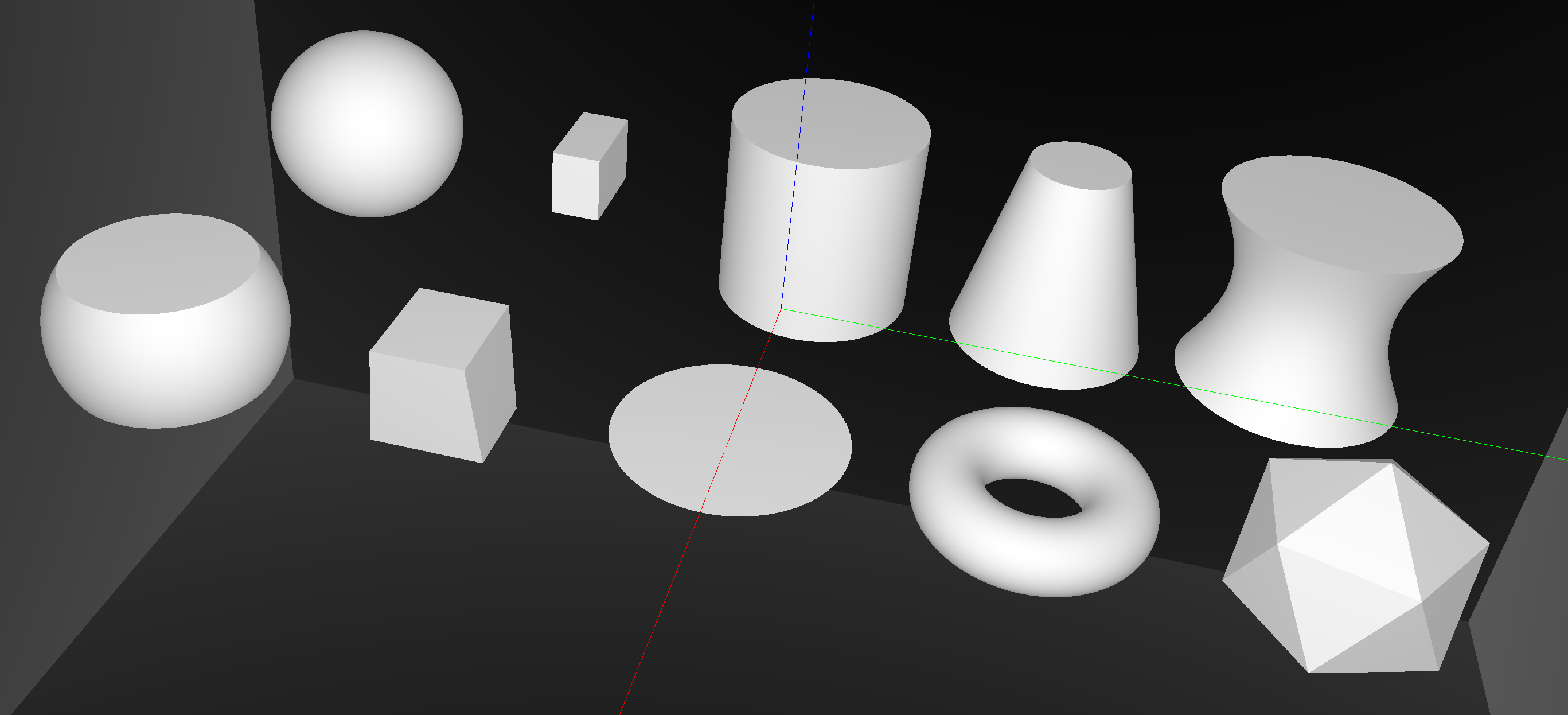
Sphere, Cylinder, Disc, Cone, Convex Polyhedron, Hyperboloid, Torus, ...
G4Boolean -> CUDA/OptiX Intersection Program Implementing CSG
Outside/Inside Unions
dot(normal,rayDir) -> Enter/Exit
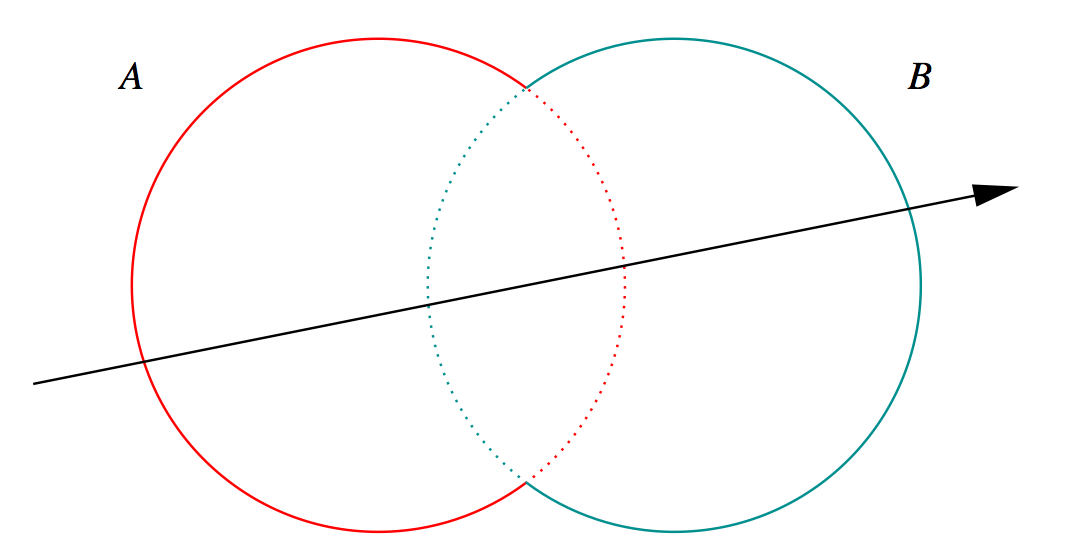

- A + B boundary not inside other
- A * B boundary inside other
Complete Binary Tree, pick between pairs of nearest intersects:
| UNION tA < tB | Enter B | Exit B | Miss B |
|---|---|---|---|
| Enter A | ReturnA | LoopA | ReturnA |
| Exit A | ReturnA | ReturnB | ReturnA |
| Miss A | ReturnB | ReturnB | ReturnMiss |
- Nearest hit intersect algorithm [1] avoids state
- sometimes Loop : advance t_min , re-intersect both
- classification shows if inside/outside
- Evaluative [2] implementation emulates recursion:
- recursion not allowed in OptiX intersect programs
- bit twiddle traversal of complete binary tree
- stacks of postorder slices and intersects
- Identical geometry to Geant4
- solving the same polynomials
- near perfect intersection match
- [1] Ray Tracing CSG Objects Using Single Hit Intersections, Andrew Kensler (2006)
- with corrections by author of XRT Raytracer http://xrt.wikidot.com/doc:csg
- [2] https://bitbucket.org/simoncblyth/opticks/src/master/optixrap/cu/csg_intersect_boolean.h
- Similar to binary expression tree evaluation using postorder traverse.
CSG Complete Binary Tree Serialization -> simplifies GPU side
Bit Twiddling Navigation
- parent(i) = i/2 = i >> 1
- leftchild(i) = 2*i = i << 1
- rightchild(i) = 2*i + 1 = (i << 1) + 1
- leftmost(height) = 1 << height
Geant4 solid -> CSG binary tree (leaf primitives, non-leaf operators, 4x4 transforms on any node)
Serialize to complete binary tree buffer:
- no need to deserialize, no child/parent pointers
- bit twiddling navigation avoids recursion
- simple approach profits from small size of binary trees
- BUT: very inefficient when unbalanced
Height 3 complete binary tree with level order indices:
depth elevation
1 0 3
10 11 1 2
100 101 110 111 2 1
1000 1001 1010 1011 1100 1101 1110 1111 3 0
postorder_next(i,elevation) = i & 1 ? i >> 1 : (i << elevation) + (1 << elevation) ; // from pattern of bits
Postorder tree traverse visits all nodes, starting from leftmost, such that children are visited prior to their parents.
Opticks : Translates G4 Geometry to GPU, Without Approximation
Materials/Surfaces -> GPU Texture
Material/Surface/Scintillator properties
- interpolated to standard wavelength domain
- interleaved into "boundary" texture
- "reemission" texture for wavelength generation
Material/surface boundary : 4 indices
- outer material (parent)
- outer surface (inward photons, parent -> self)
- inner surface (outward photons, self -> parent)
- inner material (self)
Primitives labelled with unique boundary index
- ray primitive intersection -> boundary index
- texture lookup -> material/surface properties
simple/fast properties + reemission wavelength
G4 Structure Tree -> Instance+Global Arrays -> OptiX
Group structure into repeated instances + global remainder:
- auto-identify repeated geometry with "progeny digests"
- JUNO : 5 distinct instances + 1 global
- instance transforms used in OptiX/OpenGL geometry
instancing -> huge memory savings for JUNO PMTs
j1808_top_rtx
j1808_top_ogl
Validation of Opticks Simulation by Comparison with Geant4
Random Aligned Bi-Simulation
Same inputs to Opticks and Geant4:
- CPU generated photons
- GPU generated randoms, fed to Geant4
Common recording into OpticksEvents:
- compressed photon step record, up to 16 steps
- persisted as NumPy arrays for python analysis
Aligned random consumption, direct comparison:
- ~every scatter, absorb, reflect, transmit at matched positions, times, polarization, wavlen
Bi-simulations of all JUNO solids, with millions of photons
- mis-aligned histories
- mostly < 0.25%, < 0.50% for largest solids
- deviant photons within matched history
- < 0.05% (500/1M)
Primary sources of problems
- grazing incidence, edge skimmers
- incidence at constituent solid boundaries
Primary cause : float vs double
Geant4 uses double everywhere, Opticks only sparingly (observed double costing 10x slowdown with RTX)
Conclude
- neatly oriented photons more prone to issues than realistic ones
- perfect "technical" matching not feasible
- instead shift validation to more realistic full detector "calibration" situation
scan-pf-check-GUI-TO-SC-BT5-SD
scan-pf-check-GUI-TO-BT5-SD
Performance : Scanning from 1M to 400M Photons
Test Hardware + Software
Workstation
- DELL Precision 7920T Workstation
- Intel Xeon Gold 5118, 2.3GHz, 48 cores, 62G
- NVIDIA Quadro RTX 8000 (48G)
Software
- Opticks 0.0.0 Alpha
- Geant4 10.4p2
- NVIDIA OptiX 6.5.0
- NVIDIA Driver 435.21
- CUDA 10.1
IHEP GPU Cluster
- 10 nodes of 8x NVIDIA Tesla GV100 (32G)
Full JUNO Analytic Geometry j1808v5
- "calibration source" genstep at center of scintillator
Production Mode : does the minimum
- only saves hits
- skips : genstep, photon, source, record, sequence, index, ..
- no Geant4 propagation (other than at 1M for extrapolation)
Multi-Event Running, Measure:
- interval
- avg time between successive launches, including overheads: (upload gensteps + launch + download hits)
- launch
- avg of 10 OptiX launches
- overheads < 10% beyond 20M photons
NVIDIA Quadro RTX 8000 (48G)
for loaning the card
scan-pf-1_NHit
Photon Launch Size : VRAM Limited
NVIDIA Quadro RTX 8000 (48 GB)
- photon 4*4 floats : 64 bytes
- curandState : 48 bytes
400M photons x 112 bytes ~ 45G
scan-pf-1_Opticks_vs_Geant4 2
| JUNO analytic, 400M photons from center | Speedup | |
|---|---|---|
| Geant4 Extrap. | 95,600 s (26 hrs) | |
| Opticks RTX ON (i) | 58 s | 1650x |
scan-pf-1_Opticks_Speedup 2
| JUNO analytic, 400M photons from center | Speedup | |
|---|---|---|
| Opticks RTX ON (i) | 58s | 1650x |
| Opticks RTX OFF (i) | 275s | 350x |
| Geant4 Extrap. | 95,600s (26 hrs) | |
scan-pf-1_RTX_Speedup
| 5x Speedup from RTX with JUNO analytic geometry |
Opticks Experience : Main Operational Problem : Manpower
Atypical Experience Needed
- difficult for students/postdocs to help
- Opticks is a one person project
Typical NVIDIA OptiX Users:
- software company teams building commercial renderers for design/architecture/visual-effects
- experienced graphics developers
- Windows workstations
Typical Opticks Users (Candidate Devs):
- neutrino and dark matter search experiments with 0-0.25 FTE trying to improve Geant4 simulation performance
- no graphics experience, little GPU experience
- Linux servers
Lots of interest, very little contribution, why ?
Tool Innovation is Disincentivized ?
- students/postdocs interested in Opticks
- advisors steer them to analysis : less risky, better for career
Why GPU simulation development difficult ?
- totally different geometry model
- tree of C++ objects -> arrays, textures
- solid primitives -> intersection by solving polynomials
- totally different development model
- complex libraries -> simple headers
- simpler -> smaller stack -> more threads in flight
- low level CUDA development, eg CSG from first principals
- very few libs
- restricted CUDA environment
- no recursion in intersect
- no shared memory/synchronizations/barriers
- double precision problematic, performance hit
Opticks Experience : Main Technical Problem : Geometry Translation
Approximate Triangulated geometry
GPUs love triangles, BUT polygonization not easy
- G4Polyhedron issue (black box code)
- polycones yield cleaved meshes
- just visualization issue for Geant4
- but breaks the geometry
- Opticks(OpenMesh) fixes meshes, BUT fragile
- Failed to find/develop better polygonization
- Triangulation too approximate for PMTs
- Approx. tris : limits Opticks-Geant4 matching
Intersection Performance -> Simulation Performance, Drivers:
- acceleration structure (AS) eg BVH
- geometry model input to AS
Analytic Geometry : translate volume -> surface based model
Coincident faces (even in CSG boolean constituents)
- very common problem, causes spurious intersects
- manual modelling changes : avoiding coincidence
- CSG serialized using complete binary tree
- simple+convenient, very inefficient for unbalanced trees
- balancing enables support for more complex trees
- v.complicated solids (G4Boolean abuse) still problematic
Analytic Torus Intersection
- double precision quartic root solving
- very large coefficient range, robust solution difficult
- many techniques tried (numerical/computer science papers)
- very heavy kernel : 10x performance impact even when unused
- pragmatic solution : avoid torus, or use triangulated
Opticks Experience : Problems with using NVIDIA OptiX
NVIDIA OptiX 7 : Entirely new API
- introduced August 2019
- low-level CUDA-centric thin API (Vulkan-ized)
- near perfect scaling to 4 GPUs, for free
- Major effort needed to support in Opticks
- NVIDIA GPUs only
- No influence on direction of NVIDIA OptiX (eg OptiX 7)
- immature OptiX support for Linux debug/profiling
- most OptiX users develop on Windows ?
- cuda-gdb not to level of Nsight VSE
Optimization Issues
- difficult to approach 10 GigaRays/s
- closed source : black box BVH
- blind experimentation
Linux GPU Cluster (eg Tesla V100) Deployment Issues
- OptiX releases demand lastest short lived branch driver
- GPU clusters typically use long lived branch drivers
- drivers appropriate for OptiX slow to appear
- must use older OptiX release for many months
- RTX performance, RT cores ~not available in server GPUs[1,2]
- 4 non-RTX GPUs ~ single RTX GPU performance
- https://www.nvidia.com/en-us/design-visualization/quadro-data-center/
[1] NVIDIA RTX Server with 8x NVIDIA Quadro RTX 8000 : probably restricted to car, design, film companies ... [2] NVIDIA Quadro RTX 8000 PCIe Server Card (Passive)
Opticks Experience : Benefits from using NVIDIA OptiX
State-of-the-art GPU ray tracing
OptiX makes this performance accessible
- drastic performance factors > 1000x Geant4
- GPU offloading
- eliminates memory, time bottlenecks
- substantial improvements with each release
- benefit from new GPU features
NVIDIA OptiX 3,4,5,6
- excellent easy to use API
- useful shared host/device context
- flexible geometry : implement intersection code
- automated acceleration structure (AS) building/traversal
- instancing of geometry + AS, essential for JUNO PMTs
- transparent ~linear scaling up to 4 GPUs
- graphics interop buffer sharing CUDA/Thrust/OptiX/OpenGL
- in-situ visualization with no data movement
- straightforward port of Geant4 optical physics
NVIDIA OptiX 6
- accelerated with ray trace dedicated hardware (RT Cores)
- 5x performance from RTX
1 or 2 Releases per Year
- until OptiX 7, fairly compatible API changes
- tuning for new GPUs
Summary
Innovation = Problems...
- Problems Inevitable
- Ample benefits reward efforts

Opticks : state-of-the-art GPU ray tracing applied to optical photon simulation and integrated with Geant4, giving a leap in performance that eliminates memory and time bottlenecks.

- Drastic speedup -> better detector understanding -> greater precision
- any simulation limited by optical photons can benefit
- more photon limited -> more overall speedup (99% -> 100x)

| https://bitbucket.org/simoncblyth/opticks | code repository |
| https://simoncblyth.bitbucket.io | presentations and videos |
| https://groups.io/g/opticks | forum/mailing list archive |
| email:opticks+subscribe@groups.io | subscribe to mailing list |